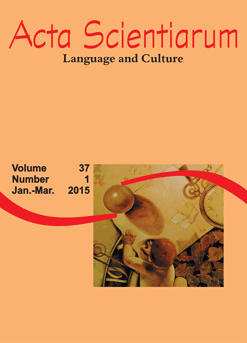<b>‘An ever-pacing thought’: the dangers of the symbol in <b>Moby Dick</i>, by Herman Melville
Abstract
This study investigates the instability of the symbols in Moby Dick, by Herman Melville, and the dangers of a symbolic reading both to the crew of the Pequod and the reader of the novel. If Ishmael, on the one hand, inhabits the borders of the text and, therefore, becomes the only possible witness to the shipwreck – that is to say – the one who erases his traces of identity so that he can narrate his experience – Ahab, on the other hand, invests in the alleged concreteness of the symbols and, for this reason, submerges along with the meanings he first attributed to his quest. Together with the sinking of the Pequod, the symbols submerge to make way for an errant textuality.
Downloads
DECLARATION OF ORIGINALITY AND COPYRIGHTS
I Declare that current article is original and has not been submitted for publication, in part or in whole, to any other national or international journal.
The copyrights belong exclusively to the authors. Published content is licensed under Creative Commons Attribution 4.0 (CC BY 4.0) guidelines, which allows sharing (copy and distribution of the material in any medium or format) and adaptation (remix, transform, and build upon the material) for any purpose, even commercially, under the terms of attribution.
Read this link for further information on how to use CC BY 4.0 properly.




















6.png)









